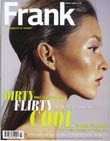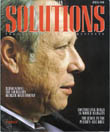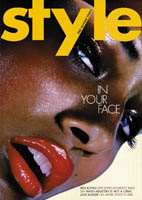Magazine industry sectors
Magazines are periodicals that can be categorised as belonging to one of these magazine industry sectors:- consumer magazines (general and specialist)
- business / trade / B2B magazines
- customer publishing / contract publishing / custom publishing
- newspaper supplements.
Other types of periodicals include part works and academic journals. Part works have a fixed number of issues and are designed to be collected as a set. Examples include series on Inspector Morse or military topics. Each part will come with a cover mount, such as a DVD or figurine. They are sold in newsagents and are heavily advertised on television in January (when rates are cheap). Journals are for academics. Their distinguishing feature is an academic board that reviews articles. The main sales channel is through subscriptions to college libraries, though some, such as Nature, may be seen in some shops. Part works and academic journals are not covered further on this page.
Staff move between sectors and several companies are active in both consumer and customer magazine sectors. For example, Peter Crookston was editor of IPC's innovative women's monthly Nova in the early 1970s. He went on to edit the Observer newspaper's supplement and then to edit customer magazines such as Expression (for American Express), InterCity (British Rail) and Heritage Today (English Heritage) at Redwood Publishing. Redwood was at one stage controlled by BBC Magazines and launched most of the BBC titles, including Gardeners' World, Homes & Antiques and Top Gear. The quality of writing, design and production in supplements and contract magazines will rival that of consumer magazines. However, contract magazines rarely appear on Ebay, suggesting readers do not feel long-term emotional attachments to them.
Consumer magazines
 Consumer glossy |
These include general consumer magazines that aim to entertain
and inform (such as Loaded, Elle, Radio Times)
and consumer specialist titles aimed at an interest
or hobby (Car, Total Film, Gardeners' World). The UK
consumer magazine market can lay claim to being the most sophisticated
and competitive in the world. While Britain is small compared
with the US, Japan or Germany, it has 2,800 consumer
magazines – a total marginally beaten by the US (with 3,200).
With a population of 58 million, this means UK publishers have
a harder battle to make money than, say, in the US, with
265 million potential readers. The UK has twice as many titles
as France, which has the same population. Total
sales of consumer magazines have been falling since they peaked
in the 1950s (with far fewer titles) as the role of magazines
and newspapers as the main purveyor of information was usurped
by television – and free magazines in the form of newspaper
supplements. Figures from the Advertising
Association put total sales at about 2,100 million copies in
1970, a figure that fell steadily to 1,200 million in
1992. However, recent years have seen a rise to 1,339m
copies in 2004. New launches in the past ten years have numbered
421-602 annually, according to WH Smith. Profiles of consumer magazine publishers Men's magazines A-Z Women's glossies |
Business magazines
 Weekly trade tabloid |
Business magazines are specialised and aimed at people in work.
They are sometimes called 'professional', 'trade' or 'B2B' magazines.
Examples include Campaign for the advertising industry,
General Practitioner, a free weekly
titles for doctors, and Press Gazette for
journalists. Often, they are published in a tabloid newspaper
(A3) format, though on glossy paper to support colour advertising
and possibly editorial colour. Lloyd's
List for people in shipping and insurance was founded in 1734 and is one
of the world's oldest publications of any kind. Many business
magazines are free to specified readers (known as controlled
circulation) and so rely on advertising. More than three-quarters
of business titles' revenue comes from advertising. They may
also be classified as having 'vertical' readerships (ie all readers
are in a specific industry, such as motoring) or 'horizontal'
– readers spread over many industries, such as personnel or
public relations. Profiles of B2B magazine publishers |
Customer magazines
 Business Solutions: award-winning customer magazine for Unisys |
Customer, contract, or custom magazines are produced by specialist
publishing agencies or divisions of mainstream publishers as
part of a marketing strategy to reach the customers of large
companies.
Most of the top UK circulations (nearing 7m copies a month) are
claimed by free magazines from companies such as the Automobile
Association and Tesco. These compete with consumer and business
periodicals for readers and advertising. Most
customer magazines are free, either sent by post or picked up
in shops, but some are sold on news-stands, such as Ikea's Room and
Waitrose Food Illustrated (though this was a news-stand
title before Waitrose became involved). Until the early 1980s,
the only high-profile example was High Life for British
Airways. Free airline magazines are the most common customer
magazines internationally. The contract publishing sector was
given a boost by the arrival of Redwood Publishing in 1982,
which launched quality titles, such as Intercity (for first class travellers on British Rail)
Expression (American Express) and Business Solutions
(Unisys). The merger of John Brown (which had sold
off its consumer magazines, such as Viz) and Citrus in
2002 as John Brown Citrus Publishing created the UK's largest
group. Profiles of customer magazine publishers |
Newspaper supplements
 Style: with the Sunday Times |
Each Sunday, 13 million colour supplements are delivered
free with Britain's papers. More come with Saturday papers.
They include How to Spend It, which appears worldwide
with the Financial Times and the Sun's weekly TV
listings guide. The concept took off with the Sunday Times
Magazine, which appeared in February 1962. UK papers are
avidly read – two out of three people read a daily national
paper. Their in-depth daily coverage of subjects such as
sport means it can be difficult to make mainstream magazines
work. For example, Golf Digest
in the US sells 1.5 million copies a month, whereas the best-selling
UK golf title can manage less than 100,000. All the national
papers carry separate sports sections each Monday – up to 32
pages with colour. The Observer, the world's oldest Sunday
newspaper, has carried a colour, monthly sports magazine and
a food magazine since 2001; it followed these with a music
monthly and a women's monthly in January 2005. The daily Mirror had
its own weekly colour women's magazine for a while. Every national
paper now carries several colour magazines each week and supplements
on fashion, food, technology, TV, motoring and so on. The
News of the World relaunched its magazine in 2008 as
Fabulous and claimed is to be ‘Britain’s biggest weekly
glossy’.
It justified the word ‘biggest’ not on the strength
of its size (74 sub-A4 pages) but on the fact that it had the
biggest print run (the paper was then selling 3.2m every week). Profiles of newspaper publishers |
Factors in the UK market
As well as competition from newspapers and contract magazines, other factors that make the UK so competitive include:- broadcast, cable and satellite TV are well-established. The reputation and quality of the BBC in particular is second to none. There have been many magazine spin-offs by TV companies, from best-sellers such as BBC Good Food to niche titles such as Channel 4's Grand Designs.
- penetration of computer systems and web access is very high. Extra competition from this area for football coverage, along with expanded newspaper sections, is seen as having led to the demise of several general weekly and monthly football magazines.
- advertising marketplace. Two of the three largest advertising agencies in the world are British. Market research and marketing techniques are highly evolved. About 36% of consumer magazines' revenues come from advertising, although this proportion will be higher for the top-selling 'glossy' magazines.
- integration between media. Until it licensed its titles, the BBC was one of the biggest magazine publishers with leading titles in areas such as gardening and motoring that fed off TV series.
- European and US publishers are active in the UK. US-based Time-Warner took control of the largest UK magazine publisher, IPC Media, in mid-2001.
- innovative editors are often lured to the US to launch or revamp titles, from Anna Wintour (US Vogue), to Tina Brown (New Yorker, Vanity Fair, Talk) to Glenda Bailey (Marie Claire) and Ed Needham from FHM to Rolling Stone and US Maxim. Reverse traffic has included the late Michael VerMeulen at GQ and Greg Gutfield from US Stuff to Maxim.
- ideas 'cross the pond' between the UK and US very quickly. Examples include UK 'lads' mags' such as Maxim (which became a top 25 title in the US from Dennis); Glamour (a top 5 UK title since its launch in an A5 format adopted from Italy in 2001); Elle Girl launch in both US and UK in 2001. Recent years have seen Australia become a source of ideas and, since the late 1980s, launches from German groups. Most of the big UK titles are acually owned by foreign groups.
- budgetary control. While there is a similar number of titles in the UK and US, sales are far higher in the US because of the larger market and lack of competition from national papers. So the US has four titles with sales of 10m copies; the UK has none. The US has 300 titles selling more than 250,000 copies; the UK just 50.
- distribution. Even before the national rail network was established in 1842, the UK had excellent transport links. This, combined with the county's small area (half that of France for the same population), has led to very efficient distribution.
- history. The first recognised magazine, a review of books called Journal des Scavans, was published in Paris in 1665. In the same year, the Philosophical Transactions of the Royal Society was published. A more general magazine, The Athenian Gazette, appeared in 1691 and the same century saw the appearance of The Tatler. In the 19th century, The Spectator appeared and the Illustrated London News (both still published). The latter was one of the first titles to carry extensive illustrations and used colour from 1855.
Number of magazines and country sizes |
|||||
| Country | Consumer titles |
Trade titles |
Total titles |
Population (million) |
Area (sq km) |
| UK | 2,794 | 5,151 | 7,945 | 58.8 | 0.24m |
| US | 3,187 | 9,607 | 12,794 | 265.3 | 9.36m |
| Germany | 2,000 | 4,400 | 6,400 | 81.3 | 0.36m |
| Japan | 2,449 | 1,791 | 4,240 | 125.6 | 0.37m |
| France | 1,250 | 1,667 | 2,917 | 58.3 | 0.55m |
| Sources: PPA Handbook; Pears Cyclopaedia | |||||



